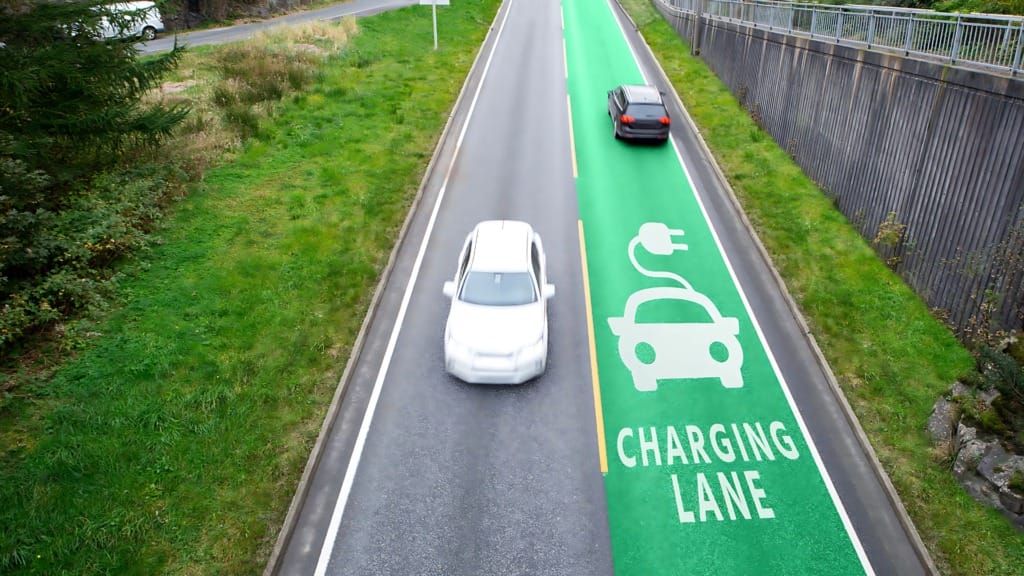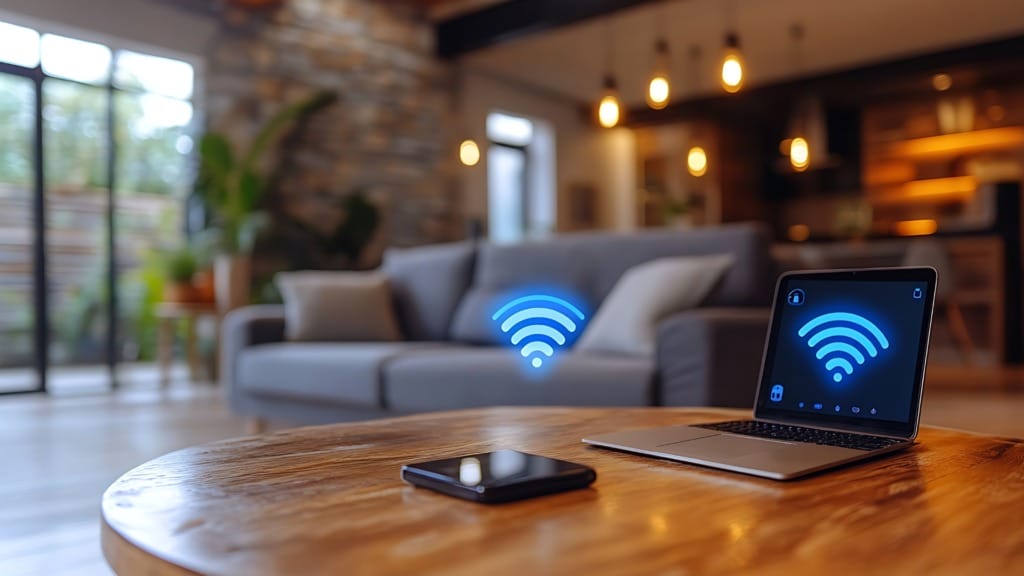Wireless charging has been discussed for years, but until recently, its use was limited to small gadgets like smartphones and smartwatches. Wireless power transfer is becoming more efficient, reliable, and practical for a broader range of devices. Innovations like resonant inductive charging allow energy to transfer across short distances, making charging pads far more forgiving of device positioning. The latest Qi2 standard, for example, adds magnetic alignment so devices snap into the right place automatically, improving energy efficiency and reducing heat loss.
Beyond smartphones, wireless charging is expanding into areas that were previously thought to be impossible. Electric vehicles (EVs) can now charge wirelessly using inductive floor pads, which could soon become standard in garages, public parking spots, and even on some roadways. These wireless EV chargers are already achieving up to 93% efficiency, comparable to wired home chargers. This makes wireless charging practical and convenient for drivers who want a seamless charging experience.

The future of wireless charging doesn’t stop with cars. Researchers are working on long-range wireless power transfer, where energy can be sent across a room or outdoors. Xiaomi demonstrated a system that beams power across several metres to keep devices topped up while in use without a charging pad. While still in development, this technology could lead to homes where gadgets stay charged as long as they are within range of a wireless power hub, making power outlets almost redundant.
These advances are driven by better hardware, smarter software, and global standards that allow more devices to work with the same chargers. Wireless charging is no longer just a novelty for tech enthusiasts—it’s on its way to becoming an essential part of everyday life, from personal devices to cars and even smart home appliances. This shift to wireless power is laying the foundation for a world where cables are rarely needed.
Wireless audio and connectivity have matured into everyday essentials.
If you look around today, you’ll notice that wired headphones are becoming increasingly rare. The rise of Bluetooth audio has made wireless listening the norm, helped by improvements in connection stability, sound quality, and battery life. Bluetooth earbuds and headphones now dominate the market, accounting for over 70% of sales in many regions. Features like multipoint pairing, which lets you switch between devices seamlessly, and advanced codecs that support high-resolution audio have turned wireless sound into a serious competitor to wired options.
The same shift is happening with home and office connectivity, where Wi-Fi 6 and Wi-Fi 7 are replacing Ethernet cables in more environments. These latest Wi-Fi standards handle far more devices at once without slowing down, making them perfect for busy homes and workplaces filled with smart devices, laptops, and streaming gadgets. In real-world tests, Wi-Fi 6 can reach speeds nearly as fast as wired Gigabit Ethernet, giving users the flexibility of wireless with the performance they expect from wired connections.
This move toward wireless is also influencing how we interact with peripherals and displays. Wireless keyboards, mice, and game controllers are already standard, but wireless docking stations are now becoming popular. With technologies like WiGig, you can walk into your office and set your laptop down, and it automatically connects to monitors, printers, and networks — all wirelessly. For home entertainment, wireless HDMI and smart streaming devices let you mirror content from your phone or laptop to your TV without a single cable.
With these developments, the experience of working, playing, and relaxing is becoming much less dependent on physical connections. Wireless audio and connectivity have evolved from convenient extras into default features that users expect. This sets the stage for an entirely cable-free environment, where all your devices communicate and stream seamlessly, whether at home, in the office, or on the go.
5G and 6G are turning mobile networks into high-speed highways
While Bluetooth and Wi-Fi have improved local wireless connections, the arrival of 5G transforms how devices connect over longer distances. With speeds that match or exceed home broadband, 5G networks can stream high-definition video, support AR and VR experiences, and enable real-time cloud gaming on the move. Its ultra-low latency sets 5G apart, which means data flows with minimal delay, enabling time-sensitive applications like remote surgery and autonomous vehicles to operate safely and smoothly.
This leap in mobile performance is making wireless not just an alternative to wired broadband but, in some cases, the preferred option. In rural areas, 5G home broadband is filling the gaps where fibre connections aren’t practical. Meanwhile, industries like manufacturing are using private 5G networks inside factories to connect machinery and sensors with guaranteed reliability. This allows factories to run smarter, faster, and more efficiently, with wireless replacing traditional industrial wiring.

The story doesn’t end with 5G. Researchers are already working on 6G, the next generation of wireless networks expected to arrive around 2030. With potential speeds up to 100 times faster than 5G, 6G will go far beyond connecting people—it will connect everything, from vehicles and buildings to streetlights and clothing. It’s also expected to combine communication with precise sensing so your device can transmit data and detect its surroundings through the same wireless system.
This transition to 5G and beyond means wireless technology will no longer be about convenience. It will become the backbone of how cities operate, how industries optimise, and how we experience content. Wireless won’t just replace cables — it will unlock new possibilities that wired networks could never achieve.
AI and IoT are making wireless more innovative and more efficient.
Wireless technology is becoming smarter. Artificial intelligence (AI) allows modern wireless networks to optimise in real-time. AI algorithms analyse data about signal strength, interference, and device movement to dynamically adjust settings, ensuring the best connection for each user. This allows Wi-Fi networks and 5G towers to fine-tune themselves without human intervention, delivering more reliable service to more devices.
This intelligence is particularly important as the Internet of Things (IoT) grows. Millions of wireless sensors and devices need to stay connected in smart homes, offices, and factories while sharing real-time data. AI helps manage this flood of information, efficiently allocating bandwidth and identifying potential problems before they disrupt service. Some systems use AI for predictive maintenance, spotting signs of device failure so repairs can be done before things break down.
This combination of AI and IoT creates smarter environments in homes. Smart thermostats learn your habits, adjusting the temperature to save energy without compromising comfort. Security cameras distinguish between family members and strangers, reducing unnecessary alerts. This happens through wireless connections, with AI constantly improving performance based on what it learns from your behaviour.
The integration of AI and IoT into wireless networks is turning these systems into something far more potent than just a replacement for cables. Wireless networks are becoming self-healing, self-optimising ecosystems that understand how they’re used and improve over time. This intelligence makes wireless not just more convenient but also more reliable and resilient than ever before.
Wireless is reshaping homes, workplaces, and cars.
The benefits of wireless technology are most visible in the places we spend the most time — our homes, our workplaces, and our cars. In smart homes, wireless gadgets are turning ordinary houses into connected ecosystems. Lights, locks, speakers, and appliances communicate over Wi-Fi or other wireless standards, allowing homeowners to control their environment with voice commands or apps. Newer devices work together automatically — for example, your smart doorbell can trigger your hallway lights and security cameras as soon as someone approaches.

In workplaces, all-wireless offices are becoming the new standard. Employees can move freely with laptops that automatically connect to wireless displays and printers. Meetings begin with one click, with no need for cables or adaptors. Even building management is becoming wireless, with sensors monitoring air quality, temperature, and occupancy to optimise energy use and keep employees comfortable.
Cars are also becoming wireless hubs on wheels. From Bluetooth audio and wireless phone mirroring to built-in 5G connectivity, vehicles now rely heavily on wireless for entertainment, navigation, and safety. As autonomous driving advances, cars will need constant wireless communication with each other and with smart infrastructure, making wireless connectivity as important as the engine itself.
Together, these changes show that wireless technology is rapidly becoming the default way we power, connect, and communicate in every aspect of life.





